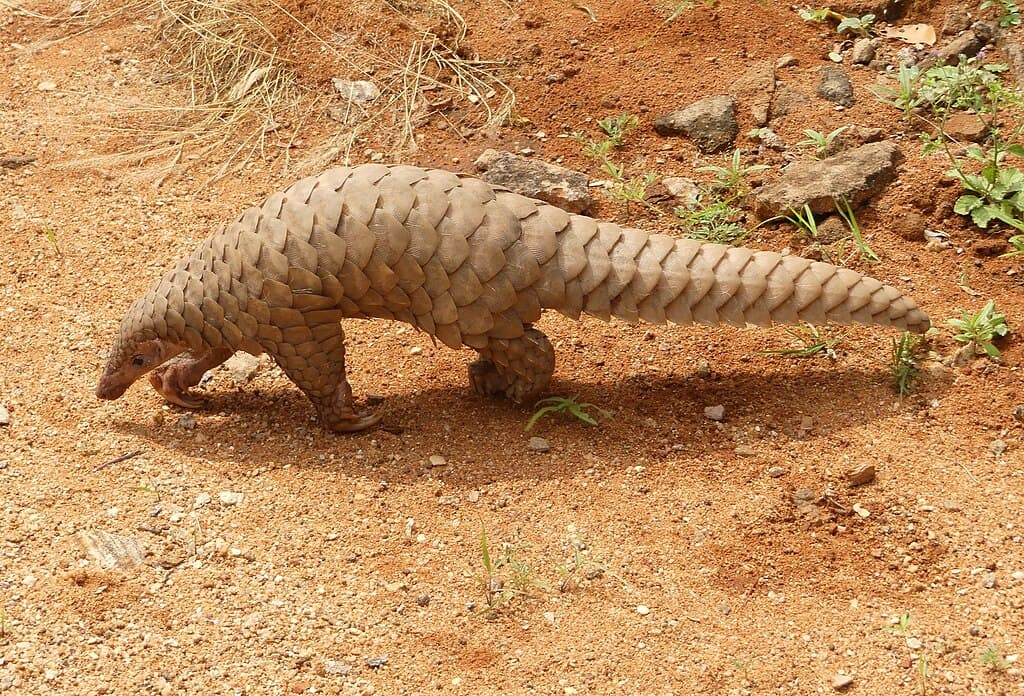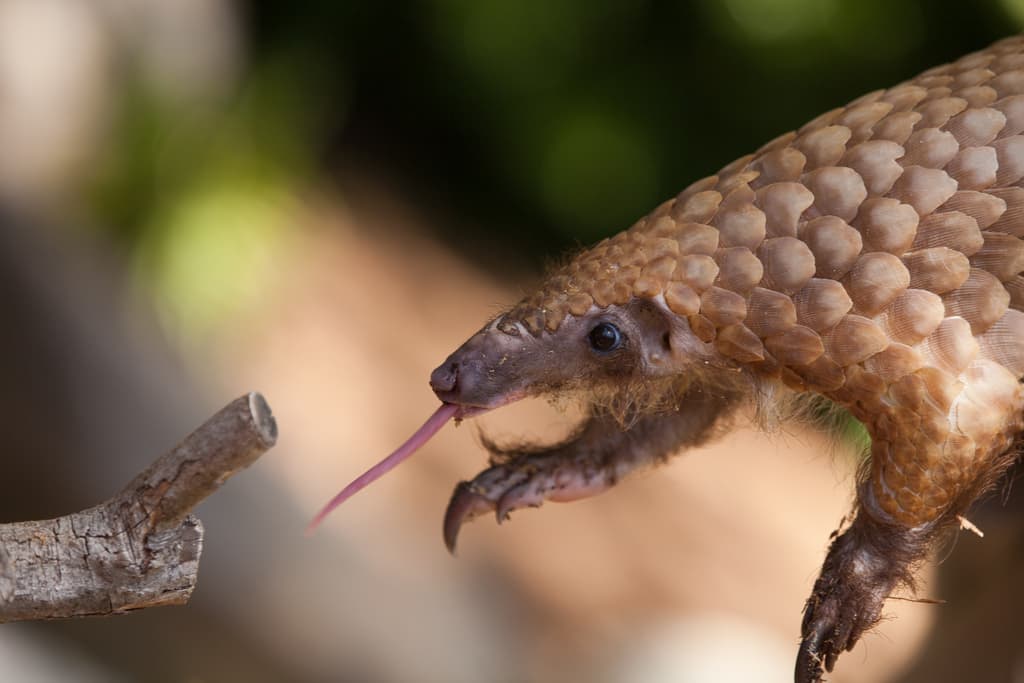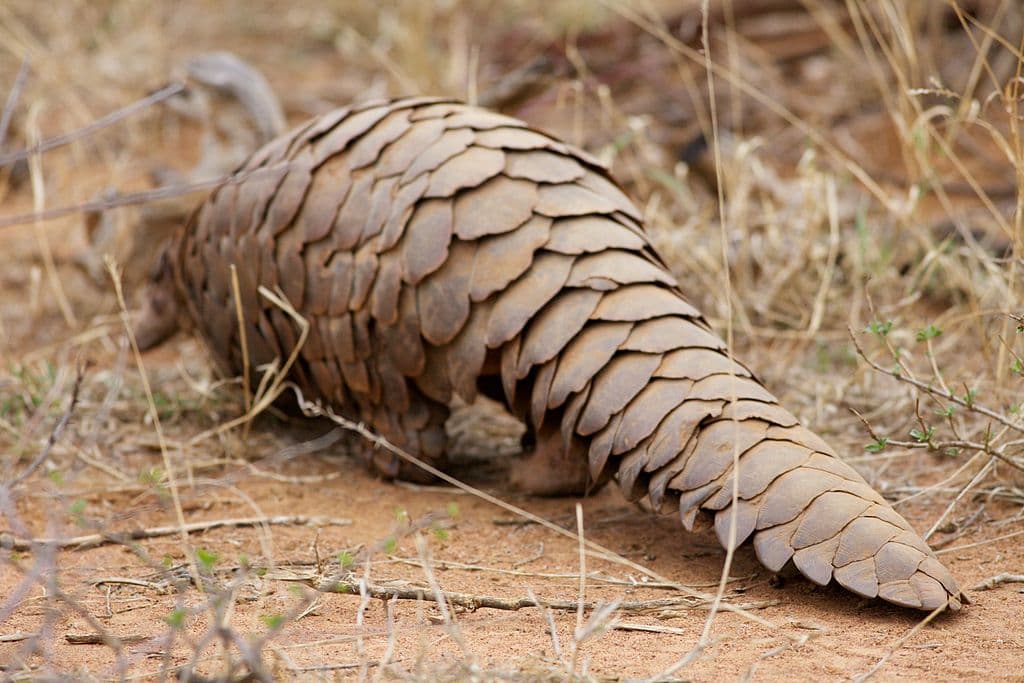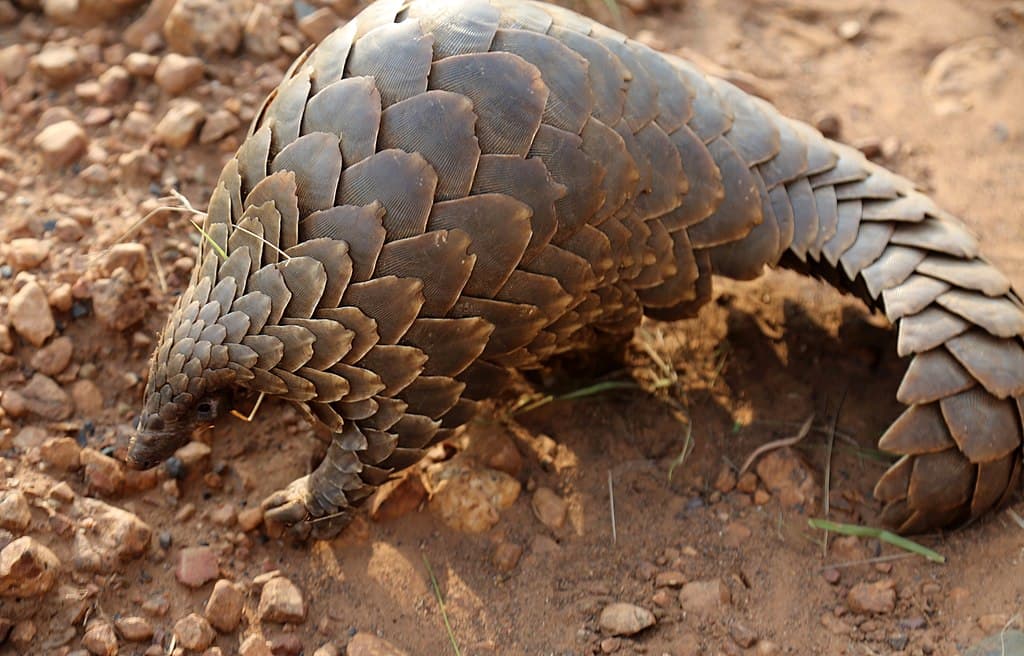Pangolin (សត្វពង្រូល) is one of the rare animals in Cambodia that is considered Critical Endangered on the IUCN red list. Many people know their name, but not many of them know what they are like or how rare they are. I am here to talk about some general facts about pangolins, so let’s take a look a quick brief below.
Appearance

You know it is a pangolin because they are the only one who looks like this. A pangolin has a full armor of keratin scales overlapping from head to tail that protects them from predators. The material of these scales is similar to our fingernails and toenails, making them the only mammal with this feature. These scales grow throughout their life just like hair when the edges file down as they dig burrows and tunnels.
The thing that not a lot of people know is that the scales on their tails are sharp. They can lash those sharp scales when needed to protect themselves. Pangolins have stout limbs but they can run surprisingly fast when they need to. That is not all, some species of these mammals can also swim. Each paw has 5 toes while the forefeet have 3 long curved claws for burrowing into ant and termite mounds and for climbing.
Behavior

Pangolins are nocturnal so they come out to feed at night. When hunting, they use their special muscles that seal their ears and nostrils shut to protect themselves from attacking insects. On top of the sticky saliva, they also have special muscles in their mouths that prevent insects from escaping after the capture.
As solitary animals, they only come together to mate and bear young. Baby pangolins are born with soft scales that will harden after 2 days. However, they will ride on their mother’s tail until they are weaned which is at around 3 months. Some daddy pangolins will stay in the den until the offspring is independent.
When startled, a pangolin will cover its head with its front legs to expose its scales to predators. If you touch it or grab it, a pangolin will roll up into a ball completely. Besides curling up into a ball, pangolins can also emit a noxious-smelling chemical from glands near their anus. Think of a skunk spray, it is similar to that. Pangolins can also deter predators by hissing and puffing before lashing their sharp-edged tails.
Feeding & Habitats

Also goes by the name scale anteaters, pangolins feed on ants, bees, crickets, flies, termites, and worms, and their larvae. While having poor vision, these insectivores detect their meals by using their sense of smell. Pangolins don’t have teeth so they pick up food by using their sticky tongues. Their tongues are so long that sometimes they reach lengths of 40 centimeters. As for the tree pangolins, they use their strong prehensile tails to hang from tree branches and strip away bark from the trunk. An easy and simple way for them to find insects inside the tree barks. They are extremely important in the ecosystem because they keep the population of termites in their natural habitats under control.
Depending on their species, pangolins live in burrows or trees. Arboreal pangolins live in hollow trees while the ground-dwelling ones dig and live in tunnels at a depth of 3.5 meters. Their common habitats are flooded forests, cleared and cultivated areas, thick brush, tropical forests, and savannah grassland. Generally, they live where large numbers of ants and termites are present that can accommodate their large insect appetites.
Threats

There are 8 pangolin species on two continents, but they are either Critically Endangered or Vulnerable there. African pangolin include Cape pangolin (Temminck’s pangolin), giant pangolin, long-tailed pangolin (black-bellied pangolin), and tree pangolin (white-bellied pangolin). As for the Asian pangolins, they are Chinese pangolin, Indian pangolin, Malayan pangolin, and Palawan pangolin.
One of the threats to their population is the deforestation of their natural habitats for agriculture and human settlements. Pangolins are one of the most trafficked mammals in the world with high demands in Asia and Africa for their meat and scales. In China and Vietnam, it is believed that their scales have medicinal properties while the meat is considered a delicacy. The demands in the United States are also high, mainly for their leather to be used in bags, belts, and boots.
Related Post: Things You Don’t Know About Bearcats
